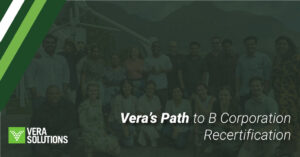“SMS makes organizations more responsive to community needs!” “Social media brings us closer to the beneficiaries of our work!” “Mobile is changing everything!” “Social entrepreneurs everywhere are measuring and scaling social impact!”
A quick look at any social impact-related blog would lead you to think that the era of data-driven programming and results-orientation has arrived, made possible by breakthroughs in technology and the rise of social networking. Unfortunately, this rhetoric is entirely disconnected from the reality of the NGOs and social enterprises that we meet every day. What the hype obscures, is that data and technology are tools, two of many, that make up a “data system”—a human-centered process that takes into account the reasons for collecting data in the first place and the learning that might come from their analysis. It’s an inconvenient truth that most social impact organizations couldn’t accurately report the number of people they reach, let alone make claims about the significantly more complicated concept of “impact.”
There are two key reasons for this gulf between the hype around data and the current reality.
First, measuring social change is very difficult. In the for-profit world, data collected for the means of testing efficiency, researching potential markets, or tracking sales are all collected to answer one question: What is our profitability? Because the question is clear, the data system built to answer it—from conception to implementation to analysis to feedback—is also clear. In the social impact world, defining one’s intended change, and deciding on a fixed way to measure it, requires careful, strategic, and localized thinking that we unfortunately don’t see many organizations engaging in effectively. Not surprisingly, their data systems are usually a patchwork of paper forms and Excel files that contain unsystematic, low-quality information. To the extent that data collection does occur, it’s almost entirely through a process peripheral to daily operations, done to appease donors or investors; it is almost never an internally driven process of knowledge-seeking or improvement. Collecting data to answer someone else’s questions will never spark the enthusiasm and innovation necessary to build a true data system…
Read the full article, featured on the Stanford Social Innovation Review, here.



